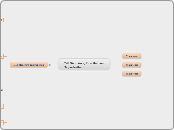Macro-molecules
Proteins
4 parts of Protein Structure
Quaternary Structure
One or more chains bonded together
Tertiary Structure
Attraction between the alpha helices & the beta sheets
Secondary Structure
Chains coil or fold
Primary Structure
Sequence of amino acids
Pepsin
Hair
Skin
Fingernail, claws
Help chemical reaction
Protect against germs
Muscle
Insulin
Composed of C, H, O, & Nitrogen
Amino Acids are it's monomer
Nucleic Acids
It is composed of 3 parts
A phosphate group
A pentose sugar
A base
It's double helix
DNA
Deoxyribonnucleic Acid
RNA
Ribonucleic Acid
Enzymes
Immune System
Movement
Hormones
Composed of C, H, O, Nitrogen, & Phosphorus
Nucleotides are it's Monomers
Lipids
It is Non-polar
It doesn't like water
Waxes
Phospholipids
Oils
Fats
Unsaturated fats
Liquid at room tempurature
Vegetable oils
Plants & Fish fats
C=C double bond in fatty acid chains
Saturated Fats
Solid at room temperature
Long, straight fatty acid chains
No C=C double bond
All C's bonded to H's
Insulates body
Cushion Organs
Triglycerides are it's Monomers
Carbohydrates
Characteristics
Always in a 1:2:1 ratio
Examples
Steroids
Cellulose (Cell Walls)
Starches
Sugars
Maltose
Sucrose
Fructose
Glucose
Glycogen
Animal
Starch
Plant
Functions
Structure
Energy Storage
Quick Energy
Composed of C, H, O
C6, H12, O6
Monosaccharides are it's monomers









